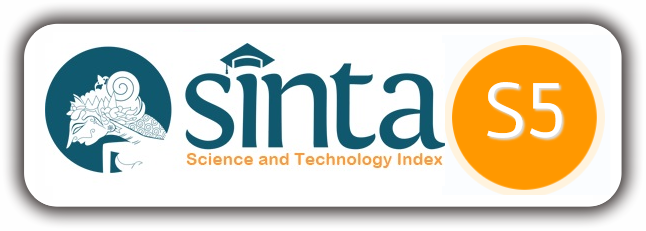MEDIA PEMBELAJARAN MATEMATIKA MATERI OPERASI HITUNG BILANGAN BULAT DI TINGKAT SD/MI
Abstract
Abstract
The use of instructional media is very useful to complement students' understanding or understanding of the material being taught and the principle is to increase the effectiveness and smooth running of the learning process. The function of or benefits from the application of learning media in learning mathematics are: With the teaching aids, children will be morehappy to follow mathematics lessons, so that their interest in learning mathematics will increase. Children will be aroused, happy, interested and have a positive attitude towards maths lessons. By presenting abstract mathematical concepts in concrete form, students at lower levels will find it easier to understand and understand. Learning media can help the visibility of space, because they do not imagine geometric shapes, especially spatial geometric shapes, so that through pictures and real objects their discerning power will be helped so that they will be more successful in learning. What is around it, or between science and the surrounding environment and society. Abstract concepts that are presented in concrete form, namely in the form of a mathematical model can be the object of research and can also be used as a tool for researching new ideas and new relations
Keywords: Media, Mathematics Learning, Counting Operations, Integer
Full Text:
PDFReferences
DAFTAR PUSTAKA Abdillah Hanafi. (1988). Prinsip-Prinsip Belajar Untuk Pengajaran. Surabaya: Usaha Nasional. E Mulyasa. (2005). Menjadi Guru Profesional Menciptakan Pembelajaran Kreatif dan Menyenangkan. Bandung : Remaja Rosda Karya Erman Suherman, dkk. (2003). Strategi Pembelajaran Matematika Kontemporer. Common Textbook. JICA.UPI Bandung. Ginnis Paul. (2008). Trik dan Taktik Mengajar. Jakarta: Indeks Howe, Michael J.A. (2005). Memahami Belajar di Sekolah. Alih bahasa H.M. Kaoy Syah. Banda Aceh: Yayasan PeNa Herman hudoyo. (1988). Belajar Mengajar Matematika. Jakarta: Dirjen Dikti P2LPTK IGAK Wardani, dkk. (2005). Penelitian Tindakan Kelas. Jakarta: Pusat Penerbitan Universitas Terbuka Kasihani Kasbolah. (1999). Penelitian Tindakan Kelas (PTK). Jakarta : Dirjen Dikti Proyek PGSD Karso,dkk. (2006). Pendidikan Matematika I. PGSD 2303. Modul 1-9. Jakarta : Universitas Terbuka : Indeks Kaueldt Martha. (2008). Wahai Para Guru, Ubahlah Cara Mengajarmu!. Jakarta Lisnawati Simanjuntak. (1993). Metode Mengajar Matematika. Jakarta : Rineka Cipta. Moh. Uzeer Usman. (2000). Menjadi Guru Profesional. Bandung : Remaja Rosda Karya Nur Akhsin & Heni Kusumawati. (2007) Matematika untuk kelas II SD/MI. Yudhistira Oemar Hamalik. (2000). Psikologi Belajar Mengajar. Jakarta : Bumi aksara Rochiati wiriaatmadja (2005). Metode Penelitian Tindakan Kelas. Bandung. Remaja Rosda Karya. Ruseffendi. (1992). Pendidikan Matematika III. Jakarta. Depdikbud. Sardiman. (2006). Interaksi & Motivasi Belajar Mengajar. Jakarta: Raja Grapindo Silberman, Melvin L. (2006). Active Learning, 101 Cara Belajar Siswa Aktif. Terjemahan oleh Raisul Muttaqin. Bandung: Nusamedia..(2002). Psikologi Belajar. Jakarta: Rineka Cipta.
DOI: https://doi.org/10.24952/ibtidaiyah.v1i1.3729
Refbacks
- There are currently no refbacks.
ALAMAT JURNAL:
Program Studi Pendidikan Guru Madrasah Ibtidaiyah
Fakultas Tarbiyah dan Ilmu Keguruan
Universitas Islam Negeri Syekh Ali Hasan Ahmad Addary Padangsidimpuan
Jln. T. Rizal Nurdin Km 4,5 Sihitang Kampus Utama Universitas Islam Negeri Syekh Ali Hasan Ahmad Addary Padangsidimpuan 22733
e-mail: dirasatulibtidaiyah@uinsyahada.ac.id
P-ISSN: 2797-4588 E-ISSN: 2797-2410
Web journal: http://jurnal.iain-padangsidimpuan.ac.id/index.php/IBTIDAIYAH/index
Statistic Of Dirasatul Ibtidaiyah

.png)








